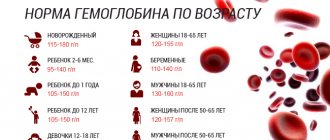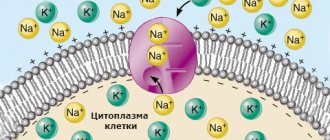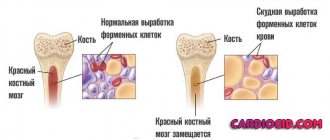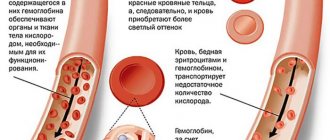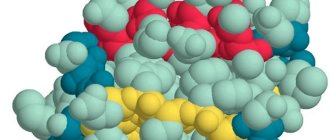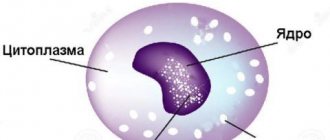A rush of blood to the face, its causes, is a question that worries many people who are faced with this problem.
Flushing means a sharp and intense feeling of heat in the legs, arms, body and head, which is most localized in the face. During such an attack, a person’s pulse quickens and their temperature rises, which brings a lot of inconvenience. In addition, such hot flashes are most often accompanied by active discharge from the sweat glands located on the face.
Basically, this unpleasant phenomenon occurs at night and lasts from a few seconds to 1 minute. But sometimes there are hot flashes that last more than 1 minute. Most often, women aged 40-46 years suffer from unexpected intense heat in the face. But a strong part of the population may also experience increased facial redness. Male symptoms for this phenomenon are no different from female ones.
Endocrine system diseases
The most common causes of fever are thyroid dysfunction, diabetes mellitus, or adrenal disease.
- Thyroid gland dysfunction. Hyperthyroidism can cause sweating in women. With increased production of thyroid hormones, the functioning of all organs is disrupted. Blood pressure may increase, palpitations and heart pain may occur. The woman sweats and begins to lose weight with a fairly good appetite. Signs of nervous excitability, increased sweating, general irritability, shine in the eyes, and enlarged eyeballs appear. An enlarged thyroid gland can be seen in the neck area.
Most often, these symptoms occur with diffuse toxic goiter. A woman may be bothered by night hot flashes and a feeling of heat in the body, which are sometimes confused with menopause. An ultrasound of the thyroid gland and a blood test for hormones will help to understand why a person has a fever. Treatment is medicinal. In case of severe nodular goiter, surgery is recommended after normalization of the level of hormones in the blood.
- Diabetes. Sometimes there are hot flashes with diabetes. This disease often occurs in women who are prone to obesity and is often combined with high blood pressure. General malaise, thirst and the need to drink plenty of fluids appear, and weight loss may occur. During physical activity or after eating, a feeling of heat and sweating appears.
Blood tests reveal elevated fasting glucose levels. Treatment consists of following a diet with limited sugar and other carbohydrates, and constantly taking medications that lower blood glucose levels.
- Pathology of the adrenal glands. Hot flashes in women are caused by the hormones adrenaline and norepinephrine. The cause of increased hormone production may be adrenal tumors. These hormones affect heat exchange and vascular tone. When they are in excess, blood pressure increases, increased nervous excitability, interruptions in heart function, high fever during meals and hot flashes occur. This condition can occur with an adrenal tumor - pheochromocytoma.
To understand why a person has a fever, it is necessary to take a blood test to check hormone levels and do a computed tomography scan. If a tumor is detected, surgery is prescribed.
Clinical manifestations
Poor circulation in the pelvis can develop over a long period of time. Therefore, there are no sharp deterioration in the patient’s well-being. Everything happens slowly, but each time the clinic becomes more clear.
The following symptoms indicate that a small pelvis can create health problems:
- Painful sensations in the abdomen. A nagging or sharp pain can radiate to the lower back, lower abdomen, genitals, or even to the leg.
- The pain increases every time. If at first tingling and slight discomfort may be felt, then even in advanced conditions there may be severe pain attacks.
- A feeling of heaviness and internal pressure appears in the stomach, which increases over time.
- Numbness in the legs. Stagnation in the pelvis leads to deterioration of blood circulation in the lower extremities, which causes tissue starvation. As a result, the legs experience tingling, burning and numbness.
- Problems with urination. The urge to go to the toilet becomes more frequent, and over time, incontinence may develop.
Painful sensations in the abdomen are a symptom of impaired blood circulation in the pelvis.
Symptoms intensify after physical exertion on the body; in women, exacerbations occur after sexual intercourse or during menstruation. When taking a horizontal position, the pain subsides.
Nervous system diseases
Among all diseases of the nervous system, the most common cause of flushing is vegetative-vascular dystonia. The cause of this disease is a violation of the nervous regulation of vascular tone. The regulatory center is located in the hypothalamic-pituitary system of the brain.
With a hereditary predisposition, during the period of hormonal changes in the body, symptoms of this disease appear. A teenager complains of hot flashes and a feeling of heat after eating or physical activity, and sometimes gets a fever in the morning. Fluctuations in blood pressure, mood swings and increased emotionality, characteristic pain in the heart and rhythm disturbances appear.
The disease is treated jointly by a therapist or cardiologist. A mandatory examination of the nervous and cardiovascular systems is carried out - blood and urine tests, electrocardiography, ultrasound of the heart and other examinations as indicated. Therapy uses sedatives and tranquilizers, antihypertensive drugs and antiarrhythmic drugs.
Hot flashes in women can be caused by organic brain damage. With tumors and hemorrhages, a violation of thermoregulation occurs, and the body temperature rises without any infectious diseases. An increase in temperature is accompanied by a feeling of heat, hot flashes, redness of the face, sweating and general malaise. To prescribe the correct treatment, it is necessary to undergo an examination by a neurologist, a computed tomography scan of the brain or an MRI.
Other causes of hot flashes
The appearance of a sharp feeling of heat can also be caused by factors such as:
- increased physical activity;
- alcoholism;
- high ambient temperatures;
- development of menopausal symptoms in men and women;
- development of hyperthyroidism;
- formation of pheochromocytoma;
- the occurrence of a pathological tumor of a malignant nature;
- having a lot of extra pounds.
Moreover, the formation of blood flushes in the facial area can cause the body’s natural process of self-defense when exposed to low ambient temperatures.
If you experience regular attacks of fever and redness of the skin, it is recommended to contact the appropriate specialists and undergo the necessary diagnostic methods.
Interesting video on this topic:
About
Diseases of the cardiovascular system
When blood pressure rises, facial hyperemia, a feeling of heat, and headache appear. If such symptoms appear in women over 50, they often simulate the onset of menopause.
Hypertension is a disease whose symptoms usually appear in adulthood in women who are prone to obesity. If your blood pressure rises to more than 120/80 mm Hg, you need to be wary and visit a therapist or cardiologist for examination. The doctor will prescribe routine blood and urine tests, electrocardiographic examination, and ultrasound of the heart and kidneys. Once the diagnosis is confirmed, you will have to take antihypertensive medications regularly.
Poor nutrition
Another reason for the formation of severe redness of the skin of the face, in both women and men, can be poor nutrition. Thus, the appearance of hot flashes is promoted by the consumption of spicy foods, various types of peppers and the abuse of alcohol-containing drinks.
The whole point of the effect of spicy food on the human body is to increase the overall body temperature, as a result of which a sharp sensation of heat appears.
Also, a component such as capsaicin and products containing the dietary supplement Monosodium Glutamate can also contribute to the formation of the symptoms in question.
To get rid of the symptoms described above in such cases, it is recommended to simply reduce the amount of consumption of the food products in question.
Climax
The most common cause of hot flashes and fever in women over 50 is a hormonal change in the body, called menopause. During the premenopausal period in women, the production of female sex hormones estrogen decreases, while a malfunction occurs in the hypothalamic-pituitary system, the following appear:
- increased blood pressure and body temperature;
- arrhythmias and heart pain;
- sudden flushes of heat to the head, accompanied by redness of the face and sweating, usually occurring after eating.
How many hot flashes occur per day depends on fluctuations in hormone levels in the blood. Such changes in the body can last one year or more. In order to find out why you have a fever, you need to contact a gynecologist. The examination plan includes blood and urine tests, vaginal smears for flora and oncocytology, ultrasound of the pelvic organs, blood tests for sex hormones and the blood coagulation system. After examination and exclusion of organic pathology, you can take the prescribed therapy.
During climatic periods, gynecologists often prescribe hormone replacement therapy, which will help get rid of hot flashes, normalize mood and sleep, and help maintain youthful skin and the whole body.
Hot flashes not associated with menopause
The causes of hot flashes in women are not always related to menopause. Such manifestations can occur before menstruation or ovulation, as well as during pregnancy.
Let's look at these situations in more detail.
Signal about the onset of menstruation
Each female body is unique. For some representatives of the fair half of humanity, nature warns about the imminent onset of menstruation or ovulation by a feeling of heat inside the body at a constant temperature. This symptom is temporary. For some, it appears several times during one day, while for others it drags on for several days.
As a rule, hot flashes end on the second or third day of menstruation. After all, the reason for this manifestation is short-term hormonal changes in the body before menstruation, as well as ovulation. After normalization of hormonal balance, the symptom does not appear. Most women go through such days calmly without taking medications.
In some women, hot flashes may be accompanied by pain in the back or lower back, redness of the skin of the face, neck, upper chest, and attacks of nausea. In this case, the woman can consult a doctor in order to select adequate treatment.
Expert opinion
Roman Andreevich
Candidate of Medical Sciences, gynecologist-obstetrician, 14 years of work experience.
To get a consultation
You should start with special diets, traditional medicine, homeopathic medicines. Only as a last resort should you take hormones, which have many side effects.
As a sign of pregnancy
During the first trimester of pregnancy, changes occur in the woman’s body in the functioning of the cardiovascular system and the thermoregulation center.
Therefore, ladies often experience an increase in body temperature, hot flashes, and profuse sweating. Women after the age of forty are faced with certain menstrual irregularities.
They associate these changes with the early onset of menopause and stop using protection. Since ovulation is still present, there is a chance of getting pregnant. If hot flashes are accompanied by a lack of menstruation, then it is imperative to take a pregnancy test before diagnosing yourself with “early menopause.”
Tumors
A tumor localized in the brain in the area of the hypothalamic-pituitary system leads to hot flashes due to disruption of the thermoregulation center. Sweating and fever, and sensations of a rush of blood to the head may occur. The second cause of such symptoms may be a tumor of the stomach or intestines, and toxins secreted by tumor cells can lead to similar symptoms. Treatment for any tumor location is surgical followed by radiation or chemotherapy.
Possible consequences
Circulatory disorders in the pelvis can lead to various complications, because with this pathology the blood supply to the internal organs is disrupted. To improve the condition, special exercises are required, but this requires patience and time.
If you do not take care of your health, a woman can get fibroids, uterine prolapse or adnexitis. She may have problems conceiving and bearing a fetus. There will also be pain during menstruation. Men risk prostatitis, erectile dysfunction and testicular function, as well as infertility. Regardless of gender, external or internal hemorrhoids can develop.
Therefore, at the first symptoms you need to take action. At the initial stage, it is enough to regularly carry out therapeutic exercises. And if complications arise, serious treatment will be needed.
Infections
Any infectious diseases, including the common cold, have an incubation period. These are the first days of the disease, when the initial signs of the disease are erased, and sweating, general weakness and a rush of blood to the head may occur. When measuring the temperature, a low-grade fever is detected. Treatment will depend on the causative agent of the infection. Antiviral or antibacterial drugs are usually prescribed. You should not self-medicate, but rather seek help from a therapist so as not to miss a serious infectious disease.
Main causes of skin redness
Hyperemia can occur from many factors, you should consult your doctor before treatment
It is quite difficult to identify the main cause of hyperemia, especially if there were no visible reasons for this. Factors that provoke facial redness can be all kinds of external (for example, climatic) factors, as well as diseases of internal organs, pathologies of the endocrine glands. These include:
- prolonged hypothermia or overheating of the body and skin surface;
- disturbances in the gastrointestinal tract;
- increased level of hemoglobin in the blood;
- all kinds of inflammatory and infectious processes of the skin and internal organs;
- allergic or individual reactions of the body to medications, flowering plants, dust, animal hair, food, spicy, fried, hot foods and drinks;
- the use of low-quality cosmetics containing large amounts of lipids (fats), as well as mineral and essential oils, paraffins, lanolin, wax, spermaceti;
- sudden temperature changes when the skin of the face experiences alternating cold and heat, for example, when entering a well-heated room from the cold;
- hereditary (genetic predisposition);
- severe nervous excitement, as well as frequent stress and depression;
- chapping of the skin when refusing special protective creams;
- excessive use of decorative cosmetics, especially foundations, which interfere with the normal process of skin respiration and saturation with a sufficient amount of oxygen;
- frequent visits to the solarium, sauna, bathhouse, which provoke dilation of blood vessels on the face;
- chronic diseases of the paranasal sinuses, as well as the throat and ears;
- hormonal changes during puberty, pregnancy, lactation, menopause;
- character traits (shyness, suspiciousness, increased anxiety, and so on);
- increased blood and intracranial pressure;
- drinking alcoholic beverages and smoking;
- constantly washing your face with hot, hard tap water;
- abuse of alcohol-containing substances;
- rosacea, rosacea, when blood vessels lose their ability to contract after even short-term dilation;
- increased individual skin sensitivity;
- abuse of scrubs and peels, which remove the protective surface layer of the epithelium, causing the skin to react sharply to any external irritants;
- bruises of the soft tissues of the face;
- metabolic disorders;
- diseases of the endocrine system and endocrine glands.
Treatment
Therapy will depend on the underlying disease. But regardless of the cause of hot flashes, we can recommend universal medications that will help cope with unpleasant symptoms.
Medicines
- Plant-based or synthetic sedatives will help relieve excessive anxiety. The most powerful of them are antidepressants and tranquilizers, which can only be prescribed by the attending physician. You can take tablets or herbs of motherwort and valerian, the drugs “Glycine” and “Novopassit” on your own. Among homeopathic remedies, the drug “Calm” is popular.
- If symptoms are associated with menopause or hormonal disorders, it is necessary to use hormonal medications recommended by a doctor. This is the most effective remedy for treating hot flashes. It is dangerous to start taking medications on your own, as you can aggravate the symptoms, so only a doctor can advise how to treat hot flashes with hormonal medications.
- If hot flashes and a feeling of heat are accompanied by an increase in blood pressure, it is necessary to take antihypertensive drugs. During a hypertensive crisis, you can take a Capoten or Nifedipine tablet under the tongue once, but only a doctor can recommend permanent therapy.
Folk remedies
These drugs will only help as auxiliary treatments. Herbs can be used for hot flashes caused by menopause, but for a more serious reason they may not be effective.
- Decoctions of motherwort, mint, valerian, chamomile and lemon balm have a calming effect. They can be brewed and taken instead of tea.
- Contains female sex hormones soy, clover, ginseng, cohosh, flax oil.
- Decoctions of sage and hops reduce hot flashes.
It should be remembered that in large doses, even plants can have a harmful effect on the body, so you should not use them uncontrollably.
Needless to say, when hot flashes appear, you should give up bad habits. Alcohol and smoking themselves can have a harmful effect on hormone levels and vascular health and cause hot flashes. It is necessary to reconsider your diet: food should be varied and contain sufficient amounts of vitamins. An active lifestyle, sufficient physical activity, spending time in the fresh air, replacing strong tea and coffee with plain water are all factors that will contribute to a speedy recovery.
Read
Also:
- How to treat hot flashes during menopause
- Menopausal syndrome: symptoms, treatment and prevention
- Nutrition during menopause and menopause: healthy foods for women after 50 years
- How to get rid of sweating during menopause, treatment options
What diseases cause rushes of blood to the head?
The feeling of heat in the head is associated with various diseases. The diagnosis can only be made by a doctor after a comprehensive examination of the body has been done.
First, let's look at situational reasons when the fever is not dangerous and goes away quickly. Then we will move on to cases where the cause was serious pathologies.
Powerful emotions
Anger, despair, fear, shame, intellectual overstrain - all this can cause tides in the head. The condition is often accompanied by facial redness and headache. This is a clear signal that you need to put things aside and pull yourself together and abstract yourself from the problem. It is advisable to go out into the fresh air. After the person calms down and rests, the fever will go away on its own.
Wrong food
Excess spices in a dish, as well as monosodium glutamate (monosodium glutamate, glutamic acid salt, E621) can lead to a short-term feeling of high temperature in the head. This effect of monosodium glutamate, which is constantly used in fast food, has been called Chinese restaurant syndrome. The substance excites brain cells, causing the head to feel warm. This is an apparent condition that will go away on its own over time.
Allergy
Heat and itching on the surface of the head, on the skin, usually indicate an allergic reaction. It is enough to eliminate the irritating factor and take an antihistamine for the symptom to go away.
In one of the following articles on the website temperaturka.com you will find out in what cases the temperature rises due to allergies.
Skin problems
Another cause of “skin heat” is dermatitis or an unsuccessfully chosen cleanser for the scalp. The skin is irritated, dandruff appears, the head itches - these are the main symptoms of such a problem.
